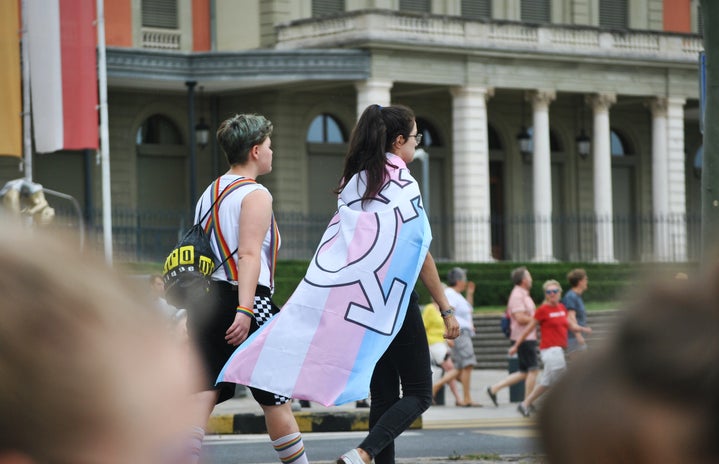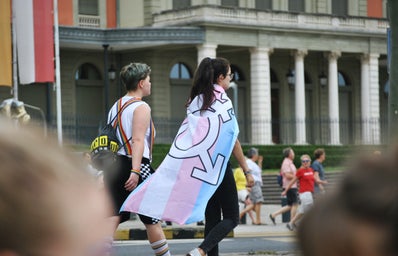The feminist movement has many strands, some better known, others less so. Among them, there is radical feminism, which is accused by many scholars of the subject of having a transphobic character. A more recent case evidencing this transphobia occurred between the feminist influencer Isabela Cepa, better known as “Feminisa”, and councilor Erika Hilton, the first transgender woman to occupy a chair in the City Council of São Paulo, in 2021.
Isabela said on her Instagram account that “True feminist candidates were not elected. The woman with the most votes is a man”. Despite not mentioning the name of Erika Hilton, it is understood that her transphobic speech was directed at the councilwoman.
After this speech, the São Paulo Public Ministry denounced the feminist influencer for prejudice against transgender people. However, in March of this year, another chapter of this story took place. ANTRA (National Association of Transvestites and Transsexuals) tweeted about the case and Isabela responded with yet another transphobic line: “The complaint came to nothing because there is no crime in saying that a man is a man”.
What are the waves of feminism?
The feminist movement was constituted from a few waves, in different chronological times, and claims that are linked to the fight against gender inequality, but that explore different aspects. The first feminist wave started in the late 19th century and was made up of white, middle-class women, mainly from the United States and the United Kingdom. This group demanded voting rights, more legal equality, and a more equal relationship with men in marriage.
Meanwhile, the second wave started in the 1960s and lasted until the 1980s, a period when women had already acquired many legal rights in several countries, but still faced many issues related to equality. The patriarchy did not allow equal access to work and study, keeping women obligatorily occupied with taking care of the children and the house. The movement arises with the intention of questioning this subordination.
In comparison, the third wave starts from the 1990s onwards given the differences between women. This wave understands that there is no single group of women with identical needs, with an approach based on differences in race, class, and region. It is clear that previous movements did not include the demands of all women.
What are the main strands of feminism?
From these feminist waves, several strands of the movement emerged. All of them point to the existence of inequality in relation to men, but social aspects such as race, class, and location greatly influence this disproportionate relationship. In addition, many feminist movements, despite their relevance for a certain portion of women, were exclusive in relation to another group. For example, the suffrage movement was led by middle-class white women who excluded black women. Among the main strands of the movement are liberal feminism, Marxist feminism, black feminism, intersectional feminism, and radical feminism.
Liberal feminism is one of the oldest and emerged at the time of the French Revolution. This movement is criticized for being totally detached from other issues and social aspects that are also a model of oppression against certain groups of women. Meanwhile, Marxist feminism defends the need for a restructuring of the capitalist system, as it understands that capitalism necessarily perpetuates inequalities between men and women given its social structure of domination.
Black feminism emerges as a response to the invisibilization of black women and racism in the feminist movement, highlighting that the violence and the problems of black women should also be seen in the sphere of race. Intersectional feminism looks at different groups of women and recognizes the existence of different social conditions determined by markers such as race, sexuality, and class.
Finally, radical feminism understands that there is a need to end male dominance for women’s liberation, which would occur through the abolition of gender. The movement understands gender as a creation in favor of patriarchy that determines a model of oppression. “Radical” comes from the word “root” and, in this sense, radical feminism defends the identification of gender differences in all spheres, from childhood, so that there is no reproduction of thoughts and attitudes that trigger this inequality.
After all, is radical feminism transphobic?
Radical feminism only accepts cisgender women in the movement, which is why they are often called transphobic. The group of radical feminists currently understands that the biological question is something that determines the construction of the image that one has of the feminine. Discrimination would occur from birth, from the identification of biological sex. In this sense, the idea that everyone can identify as a woman and that this is something subjective would go against the struggle and achievements of cisgender women.
A part of the movement claims that there is no rivalry against the group of trans people, but that their fight has nothing to do with feminism. However, this exclusion is another weapon that fuels hatred and discrimination against a group that is already extremely marginalized. In January 2023, for example, it was recorded that Brazil is the country that kills the most trans people in the world, for the 14th year.
Furthermore, this exclusion by radical feminism of trans women also falls under the hypocrisy of the movement. For example, while radical feminism strongly fights against sexual violence, trans women are the ones who suffer the most from this form of violence.
The article above was edited by Clarissa Palácio.
Liked this type of content? Check Her Campus Casper Libero home page for more!


